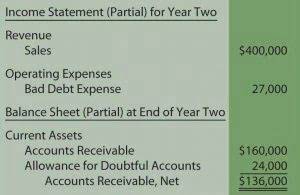
With fund accounting, instead of putting all of the funds into one cash account, the money is distributed into different “buckets” or groups. While most companies focus on making a profit by selling a good or a service, nonprofit organizations have their money come in from donors and contributors who are supporting an important social cause in society. Therefore, nonprofits put more focus on the accountability of the accounting cycle process.
Of course, you can always generate financial statements manually, but this takes a lot of time and skill. Think of bookkeeping as studying for a test—it’s the necessary first step you must take to prepare yourself for the big exam. In the same way, bookkeeping can prepare your nonprofit’s financial records and budget for tax filings, annual reports, and nonprofit bookkeeping every other deep dive into your assets. Outsourcing also offers many benefits that you can’t get with an in-house bookkeeper. Just like for-profit businesses, nonprofits need to spend money on accounting. However, it’s important to consider that nonprofits require a much more robust system of bookkeeping and accounting than for-profit businesses.
If I qualify for tax-exempt status, do I still have to pay some taxes?
In addition, you’ll need to add around 20% on top of salary, for benefits and overhead, including office space. For instance, sending personalized thank-you notes to donors or providing them with detailed reports on how their contributions have made a difference can foster a sense of connection and appreciation. Revenue is recognized when donations are received, while expenses are recognized when cash is paid out.
There are specific solutions on the market today that are designed for nonprofit bookkeeping. Murray Dropkin, C.P.A., M.B.A., is president of CMS Systems, Inc., a consulting firm that specializes in improving the operational and financial operations of nonprofit and for-profit organizations. He has published extensively in the field of nonprofit accounting and is coauthor of The Budget-Building Book for Nonprofits and The Cash Flow Management Book for Nonprofits, both from Jossey-Bass. He co-edits Nonprofit Report, a monthly newsletter on nonprofit accounting, taxation, and management. He is coauthor of the three-volume Guide to Audits of Nonprofit Organizations and frequently speaks at professional meetings and consults around the country. Many organizations make bookkeeping for nonprofits more difficult than it really needs to be.
What Mid-Market Companies Should Look for in Advisory Services
As I said before, all accounting professionals must follow GAAP (generally accepted accounting principles). But you still need to understand the different tax regulations for your nonprofit. For example, whoever is responsible for collecting donations shouldn’t be the same person updating your financial statements. Performing internal audits on a regular basis is an excellent way to keep everything in-check as well. Accrual accounting, in contrast, records expenses or revenue when they’re earned. Using the same pledge campaign example, an organization using accrual accounting would record these pledges as they come in.

Seamlessly organize financial statements and donor data with Quickbooks nonprofit accounting software. Proper accounting and financial management are necessary for nonprofit organizations to stay viable and remain accountable to the public, donors, funders, and other stakeholders. The delegation also helps alleviate leadership of day-to-day accounting tasks and allows them to focus on other organizational objectives. Nonprofit bookkeeping refers to the recording, tracking, and analyzing of an organization’s revenue and expenses. The best way to do this is by following accounting principles and staying aligned with the organization’s mission. Bank reconciliation is the process of ensuring an organization’s records (balance sheet, general ledger account, cash flow, etc.) are accurate.
